| Risk Fleet:
The British
By Mike Bennighof, Ph.D.
July 2024
 In an earlier installment, we looked at the additional German battleships added to the High Seas Fleet in the expansion Risk Fleet. The book asks what a German fleet that actually tried to challenge Britain’s Royal Navy might have looked like. In an earlier installment, we looked at the additional German battleships added to the High Seas Fleet in the expansion Risk Fleet. The book asks what a German fleet that actually tried to challenge Britain’s Royal Navy might have looked like.
Sir John Fisher, Britain’s First Sea Lord, is famous for pushing construction of the battleship Dreadnought and battle cruiser Invincible, and for a host of bombastic statements regarding his fleet and its superiority to that of the Germans. And there’s little doubt that Fisher played the game far better than his German opposite number, Alfred von Tirpitz. But less well known among the things that everyone knows is that Fisher when appointed was expected to reduce costs. Fisher intended Dreadnought to help save sorely-needed cash: a ship with the combat power of several old-style battleships, yet manned by a crew that was actually slightly smaller than that of just one pre-dreadnought battleship.
While the Union Party demanded vastly increased naval spending to humble Germany, the Labour-Liberal alliance hoped to cut costs and install badly-needed social programs before the seething unrest in Britain’s miserable industrial cities reached a boiling point. And while the Unionists raged that “We want eight (dreadnoughts) and we won’t wait,” the Liberal government (with Labour’s help) passed a pension law in 1908 and unemployment and medical insurance programs two years later.

Fisher and the Unionists got their eight (sort of), but it can’t be assumed that they would continue to build to Britain’s maximum industrial capacity. And even if they had, German steel production had caught up with Britain’s in 1893, and by 1914 was double that of the United Kingdom. Plus, universal conscription allowed the German Navy to pay a seaman or rating half what his British volunteer counterpart made – with battleships requiring between 600 and 1,000 crewman apiece, dreadnought or pre-dreadnought, that expense added up fast. Britain might not have been able to keep up in a naval arms race with a determined Germany.

For the book, we’ve added some ships to the Royal Navy, but the focus of Risk Fleet is on the German side – giving Britain a proportionately larger navy doesn’t change the strategic calculus seen in the Jutland game. I wanted to see what the German Navy could have done with a fleet that was more powerful both in relative and constant terms. Even so, we’ve got more Brits to play with.
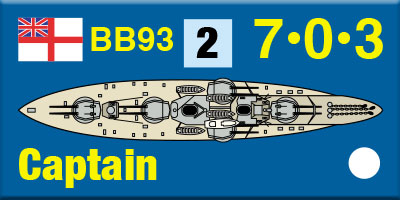
First off, Risk Fleet restores the dreadnoughts deleted from the 1906 and 1907 program by Campbell-Bannerman’s Liberal government. The fourth member of the Bellerophon class appears as Captain, and the fourth St. Vincent as Elephant. From the 1908 program, Neptune gets a sister named Atlas and the battle cruiser Indefatigable gets her deleted sister, here named Intrepid. All of these projects were cancelled before names could be assigned, but these are traditional Royal Navy names and Elephant is simply a great battleship name.
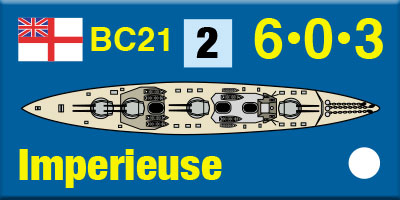
Britain authorized no battle cruisers in the 1906 or 1907 fiscal years, after the three ships of the Invincible class, so we moved the 1908 Indefatigable forward and given her a sister, and inserted a new class built to the “centerline Invincible” proposed by Director of Naval Construction Sir Philip Watts. She’s a very similar design to Invincible, but has all of her main turrets sited along the centerline and capable of firing on either beam.
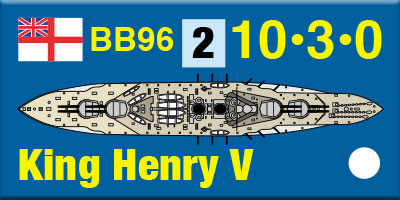
The sixth member of the Queen Elizabeth class is also present. Intended to carry the name Agincourt, we couldn’t use that one since it was re-assigned in 1914 to the stolen Turkish dreadnought Sultan Osman V (herself the former Brazilian Rio de Janeiro). Instead she’s named King Henry V, the name originally proposed by First Lord of the Admiralty Winston Churchill and one keeping the same theme.
Daily Content includes no AI-generated content or third-party ads. We work hard to keep it that way, and that’s a lot of work. You can help us keep things that way with your gift through this link right here.

While she’s not a new playing piece, we also make a lot more use of the battle cruiser Leopard, supposed sister to Tiger cancelled in favor of the original Agincourt (Siegfried Breyer makes the claim, but it appears to have little foundation – but a ship as beautiful as Tiger needed a sister ship). She appears in Jutland but doesn’t get much use there (she may not appear in any scenarios). Tiger's near-sister Queen Mary gets a sister of her own, here named Unicorn.

Australia and New Zealand each funded a battle cruiser; these would be built to the already-dated Indefatigable design, but the Dominions were willing to pay for the most modern ship available. And so we’ve given them the five-turret option for an improved Lion-class ship.
And there are foreign purchases. It’s pretty clear that Britain’s arms merchants did a great deal to fan periodic outbreaks of hysteria over the “dreadnought gap” – for example, Vickers leaking the absurdly false claim that the Krupp Works had over 100 heavy guns and the turrets for them ready to emplace on new German dreadnoughts. When politicians or journalists suggested that the Royal Navy buy into service the dreadnoughts under construction in British yards for foreign navies, suddenly either the ships became unsuitable for British use, or the urgency became less, or both. The arms makers wanted it both ways – to take in foreign purchase orders, with their padded budgets and inflated profits, yet still receive the massive flow of government orders with their guaranteed financing. And pretty much, they got their way.
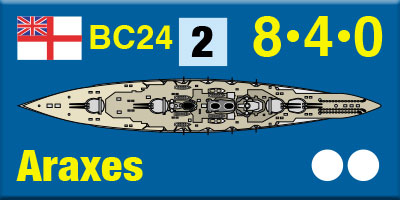
Had the mob gotten their way, the ships available would have been a mixed bag. At the top end was the very fine Kongo built by Vickers for Japan, a near-sister of the battle cruiser Tiger. She appears in Risk Fleet under the name Araxes, and would have made a very welcome addition to the Battle Cruiser Fleet – indeed, the Admiralty tried hard to purchase her from the Japanese once the war broke out, along with her three Japanese-built sister ships.

Less impressive were the pair of battleships built for Brazil. Outwardly imposing and called the world’s strongest battleships when commissioned, the truth was rather different: Vickers and Armstrong unloaded shoddy goods on the Brazilians. The pair sported poor protection, and while British dreadnoughts were powered by turbines the Brazilian ships had reverted to less powerful (and much less expensive) triple-expansion engines. Even when new, they could not have operated with the Grand Fleet thanks to their low speed. In Risk Fleet they appear as Nile and Camperdown, and operate together with the slow British pre-dreadnoughts.
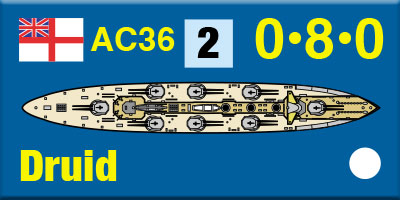
Finally there are the armored cruisers, starting with three fast armored cruisers. The Royal Navy never designed a ship like this (though Admiral Sir John Jellicoe proposed reverting to the 9.2-inch gun later), but this is the ship the Germans expected the British to build instead of the radically new battle cruisers. She’s an enlarged and improved Minotaur, with turbine propulsion and an armament of sixteen 9.2-inch guns in eight double turrets.
You can order Risk Fleet right here.
Beyond Jutland
Risk Fleet
Journal No. 38: Alternative Dreadnoughts
Retail Price: $54.98
Package Price: $45.00
Gold Club Price: $36.00
You can journey Beyond Jutland right here.
Sign up for our newsletter right here. Your info will never be sold or transferred; we'll just use it to update you on new games and new offers.
Mike Bennighof is president of Avalanche Press and holds a doctorate in history from Emory University. A Fulbright Scholar and NASA Journalist in Space finalist, he has published a great many books, games and articles on historical subjects; people are saying that some of them are actually good.
He lives in Birmingham, Alabama with his wife, three children, and his new puppy. His Iron Dog, Leopold, was a good dog.
Daily Content includes no AI-generated content or third-party ads. We work hard to keep it that way, and that’s a lot of work. You can help us keep things that way with your gift through this link right here.
|
